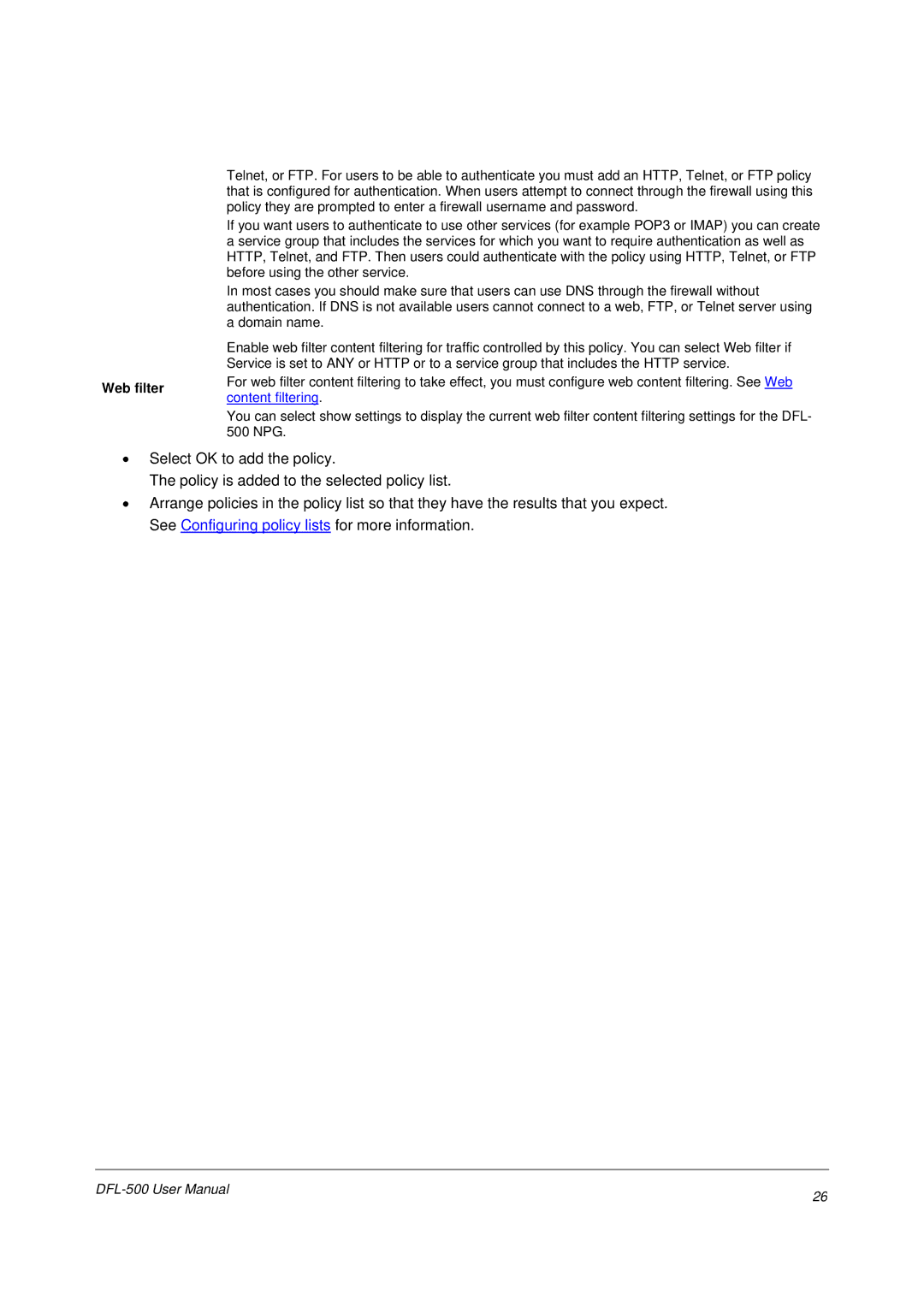| Telnet, or FTP. For users to be able to authenticate you must add an HTTP, Telnet, or FTP policy | |
| that is configured for authentication. When users attempt to connect through the firewall using this | |
| policy they are prompted to enter a firewall username and password. | |
| If you want users to authenticate to use other services (for example POP3 or IMAP) you can create | |
| a service group that includes the services for which you want to require authentication as well as | |
| HTTP, Telnet, and FTP. Then users could authenticate with the policy using HTTP, Telnet, or FTP | |
| before using the other service. | |
| In most cases you should make sure that users can use DNS through the firewall without | |
| authentication. If DNS is not available users cannot connect to a web, FTP, or Telnet server using | |
| a domain name. | |
| Enable web filter content filtering for traffic controlled by this policy. You can select Web filter if | |
| Service is set to ANY or HTTP or to a service group that includes the HTTP service. | |
Web filter | For web filter content filtering to take effect, you must configure web content filtering. See Web | |
content filtering. | ||
|
You can select show settings to display the current web filter content filtering settings for the DFL-
500NPG.
•Select OK to add the policy.
The policy is added to the selected policy list.
•Arrange policies in the policy list so that they have the results that you expect. See Configuring policy lists for more information.
26 | |
|
